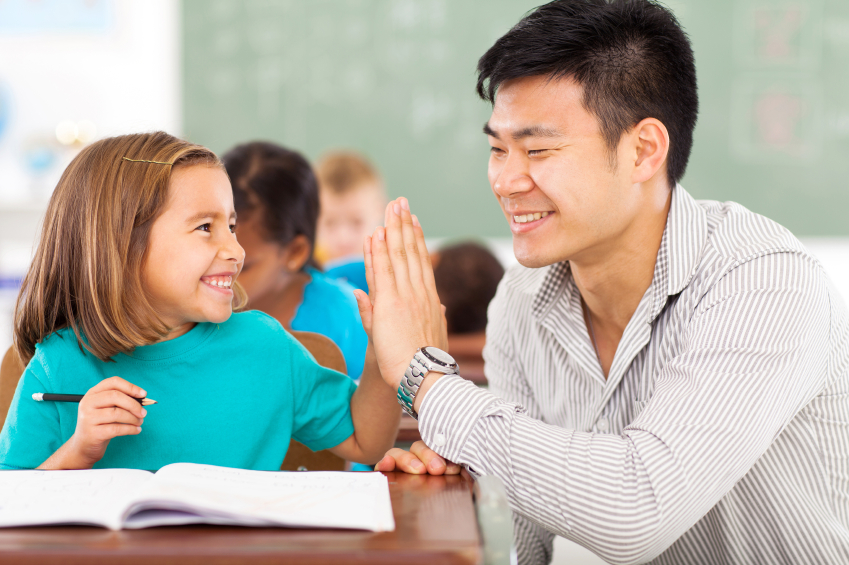
Greeting your students as they enter the classroom
February 9, 2015

Late last year a colleague of mine told me he had begun greeting each of his students as they entered the classroom before a lesson, after it was suggested at a PD he had attended. Almost immediately he noticed a shift in the behaviour of his students. Students who were regularly disruptive were less so, and he noticed students were faster at beginning tasks and seemed to be getting better at remaining on-task during the lesson. A student who was regularly late to the class after lunch began showing up on time.
The intervention was simple. He simply stood at the door and said hello to each student by name as they entered the classroom. For an example see a senior physics teacher greet and shake each student’s hand at the door before class on YouTube.
My colleague also shook hands with some students or gave them a high-five. He asked others a quick question about their day or how they were doing. He did this at the beginning of each of his classes. While it took 3 or 4 minutes at the beginning of the lesson, is students appeared happier, more engaged and willing to learn.
My colleague is a secondary teacher but similar greetings could easily be applied in the primary classroom at the beginning of the day.
The simple act of welcoming each and every student individually as they enter the classroom sets the tone for the class. It sends a message to students that you know about, and care about each of them as individuals. Anecdotal evidence suggests it helps to motivate students to work harder. There is even research to suggest that simply greeting children as they enter the classroom can increase on-task behaviour of students with problem behaviours from 45% to 75% in the classroom.[ref] Allday, R. & Pakurar, K. (2007). ‘Effects of teacher greetings on student on-task behaviour.’ Journal of applied behaviour Annual, 40, p.317-320 [/ref]
Student greetings also provide an opportunity to briefly check-in with each student enabling you to visually or verbally assess their emotional state before you begin teaching. Do they look happy? Tired? Angry? It is also a terrific way to model and have students practice appropriate social communication skills.
Other ideas that could be incorporated as part of a greeting routine include:
- Making an encouraging comment on a student’s effort in the previous class – ‘I saw you helping Georgia with her work last class. Thank you.’
- Asking a question about their life outside school ‘How did you go at footy last night?’
- Asking a question on recently taught content – ‘Can you name a carnivore?’
- Give important messages such as informing students of a temporary change of classroom routine, asking for homework, or enquiring about their wellbeing and telling them where to get work they missed when absent.
- Give students who need additional prompting, such as those with learning difficulties, an instruction on what to get started on when they sit at their desk.
The key to these greetings is authenticity and consistency. No matter what you choose to do it needs to feel right for you. If you feel awkward shaking people’s hands, the students will pick up on this and know you aren’t being genuine. Choose a greeting that reflects your personal style.
Zoe Ganim, Psych4Schools Psychologist